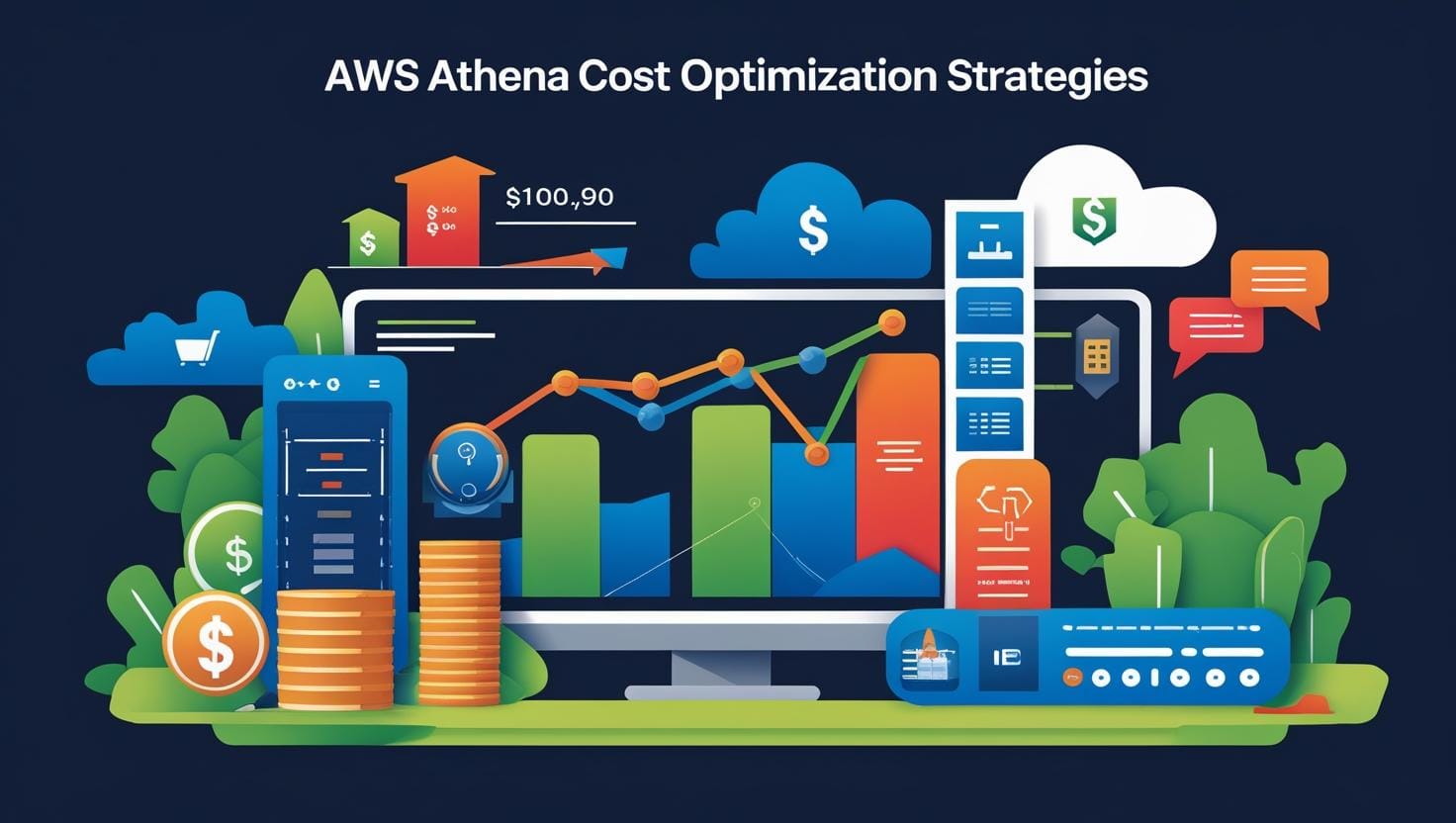
The SageMaker Blueprint: Scaling Smart with AWS ML
In today’s data-driven world, organizations are tapping into the power of machine learning (ML) to gain insights, automate tasks, and make smarter decisions. Whether it’s recommending what movie to watch next, detecting fraudulent transactions, or predicting maintenance needs in manufacturing, ML has become a cornerstone of digital transformation. But with great power comes great complexity.
Training and deploying ML models traditionally involved a patchwork of tools, complex infrastructure management, and a lot of trial and error. This is where AWS SageMaker comes in—a comprehensive, cloud-native platform designed to simplify the end-to-end machine learning workflow.
Let’s unpack what SageMaker offers, how it works, and why it’s become a go-to solution for businesses looking to scale their AI initiatives.

What is AWS SageMaker?
Amazon SageMaker is a fully managed service from Amazon Web Services (AWS) that enables developers, data scientists, and ML engineers to build, train, and deploy machine learning models quickly and efficiently. It was launched in 2017 to address a critical problem in the AI landscape: reducing the complexity and cost of bringing machine learning models into production.
SageMaker takes care of the heavy lifting. You don’t have to worry about spinning up and configuring servers, managing training clusters, or deploying inference endpoints manually. Instead, you get a cohesive platform with built-in tools and services that guide you through the entire machine learning lifecycle—from preparing your data to monitoring models in production.
Why AWS SageMaker Stands Out
There are many machine learning platforms in the market today—Google Vertex AI, Azure ML, and various open-source alternatives. So what makes SageMaker stand out?
1. All-in-One Platform
SageMaker provides everything you need in one place:
- Data preprocessing
- Model training and tuning
- Deployment
- Experiment tracking
- Monitoring
This eliminates the friction of integrating multiple tools or writing extensive DevOps scripts to manage infrastructure. Whether you’re prototyping a new model or managing thousands of models across teams, SageMaker supports the full spectrum.
2. Built-In Algorithms and Framework Support
Amazon SageMaker includes a rich collection of pre-built machine learning algorithms, finely tuned to deliver high performance and scalability across AWS’s robust cloud infrastructure. These include:
- XGBoost
- Linear Learner
- K-Means
- Image Classification
For more advanced or custom work, you can bring your own models using popular frameworks like TensorFlow, PyTorch, MXNet, or Scikit-learn. It also supports BYOC (Bring Your Own Container), allowing you to package your code in Docker containers.
3. One-Click Training and Deployment
Training a machine learning model can be as simple as writing a few lines of code or clicking a button in the SageMaker Studio UI. Once your model is trained, deploying it to a fully managed endpoint for real-time inference is equally seamless.
This ease of use accelerates development cycles, allowing teams to iterate faster and reduce time to market.
4. Cost Optimization with Managed Spot Training
Training large models can get expensive. SageMaker offers managed Spot Training, which leverages AWS EC2 Spot Instances to run training jobs at a fraction of the cost—up to 90% cheaper than On-Demand instances. This makes it a viable solution for both startups and large enterprises looking to optimize their cloud spend.
5. SageMaker Studio: Your ML Command Center
SageMaker Studio is an integrated development environment (IDE) purpose-built for machine learning. Within a single web-based interface, you can:
- Write and run code
- Visualize datasets
- Track experiments
- Debug models
- Collaborate with team members
Think of it as a JupyterLab on steroids, backed by the full power of AWS infrastructure.
The SageMaker Workflow: A Step-by-Step Guide
SageMaker is designed to guide you through the entire ML journey. Here’s a step-by-step look at how the process unfolds in practice.
1.Data Preparation
Every ML project starts with data.
- Data Labeling: Leverage SageMaker Ground Truth to streamline and scale the annotation of your datasets with high accuracy and lower costs. It supports human annotation and machine-assisted labeling to reduce costs.
- Processing: You can run ETL (Extract, Transform, Load) jobs using built-in containers or your own processing scripts.
2. Build and Train
Now it’s time to develop your model.
- Notebooks and Studio Lab: Provide an interactive environment to explore, visualize, and experiment with your data in real time.
- Training Jobs: In SageMaker allow you to build machine learning models efficiently by distributing the workload across multiple compute instances. SageMaker handles provisioning, scaling, and termination.
- Automatic Model Tuning: Use hyperparameter optimization (HPO) to fine-tune your models without manual guesswork.
3.Deploy and Monitor
A model is only useful if it can be deployed and trusted in production.
- Real-Time Endpoints: Deploy your model to a secure, scalable endpoint that serves real-time predictions.
- Batch Transform: Run inference on large datasets asynchronously.
- Model Monitoring: Detect model drift, fairness issues, or data quality degradation over time using built-in monitoring tools.
Real-World Applications of SageMaker
SageMaker finds its place in nearly every industry, turning complex data into actionable insights. From enhancing patient care in hospitals to boosting fraud detection in banking, and from streamlining retail operations to optimizing factory floors—it’s the engine behind smarter, faster decisions at scale.. Here are a few examples:
Healthcare
- Diagnosing diseases using medical imaging
- Predicting patient readmissions or treatment outcomes
- Optimizing drug discovery pipelines
Finance
- Fraud detection in real-time transactions
- Algorithmic trading
- Risk assessment and credit scoring
Retail
- Recommending products based on user behavior
- Optimizing supply chain and inventory levels
- Dynamic pricing based on demand forecasting
Manufacturing
- Predictive maintenance to avoid unplanned downtime
- Quality control using computer vision
- Process optimization through anomaly detection
The Pros and Cons of AWS SageMaker
Like any technology, SageMaker has its strengths and limitations. Here’s a balanced look:
Pros | Cons |
Fully managed and scalable | Can be expensive for smaller projects |
Supports most major ML frameworks | Steep learning curve for AWS newcomers |
Built-in IDE with collaboration | Some pricing components can be complex |
Easy deployment and monitoring | Requires cloud-first mindset |
Cost-saving features like Spot Instances | May feel restrictive compared to custom stacks |
Tips for Getting Started with SageMaker
1.Start with SageMaker Studio Lab: A free, lightweight version of SageMaker to practice your skills without needing an AWS account.
2.Use the Prebuilt Examples: SageMaker provides dozens of tutorials and sample notebooks to jumpstart your project.
3.Set Budget Alarms: Use AWS Budgets and Cost Explorer to track your ML spend and avoid surprise bills.
4.Explore Third-Party Integrations: SageMaker integrates well with other AWS services like Athena, Redshift, and Glue for data processing and analytics.
5.Automate with Pipelines: Use SageMaker Pipelines to define and automate end-to-end workflows for continuous integration and deployment (CI/CD) of ML models.
Conclusion: Is SageMaker Right for You?
If your team is ready to scale machine learning from prototype to production, AWS SageMaker offers the tools, infrastructure, and automation to make it happen. It’s ideal for organizations already embedded in the AWS ecosystem, but also flexible enough to integrate with external tools and frameworks.
Whether you’re building a chatbot, predicting churn, or analyzing satellite imagery, SageMaker lets you focus on solving business problems instead of wrestling with infrastructure.
Of course, there’s a learning curve, and you’ll want to keep a close eye on usage to manage costs effectively. But with thoughtful design, SageMaker can significantly reduce time to market and improve the reliability of your ML solutions.
Ready to Optimize Your Cloud Spending?
While SageMaker helps you innovate faster, it’s important to keep your AWS costs under control. That’s where Trucost.Cloud comes in. We specialize in helping companies like yours track, analyze, and reduce AWS spend—without compromising performance.
Get started today with a personalized consultation. Visit Trucost.Cloud or contact us to learn how we can help you make smarter cloud cost decisions.










